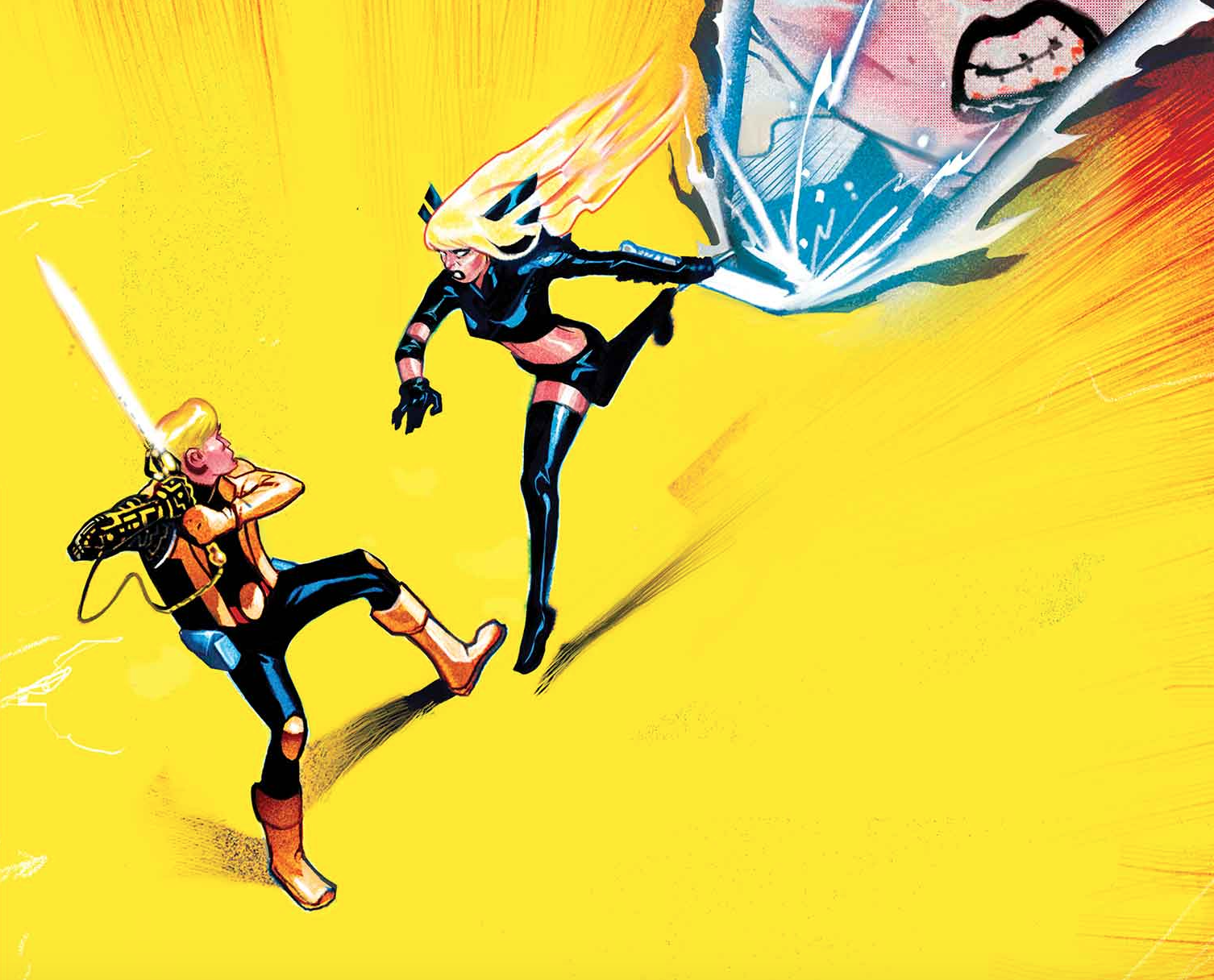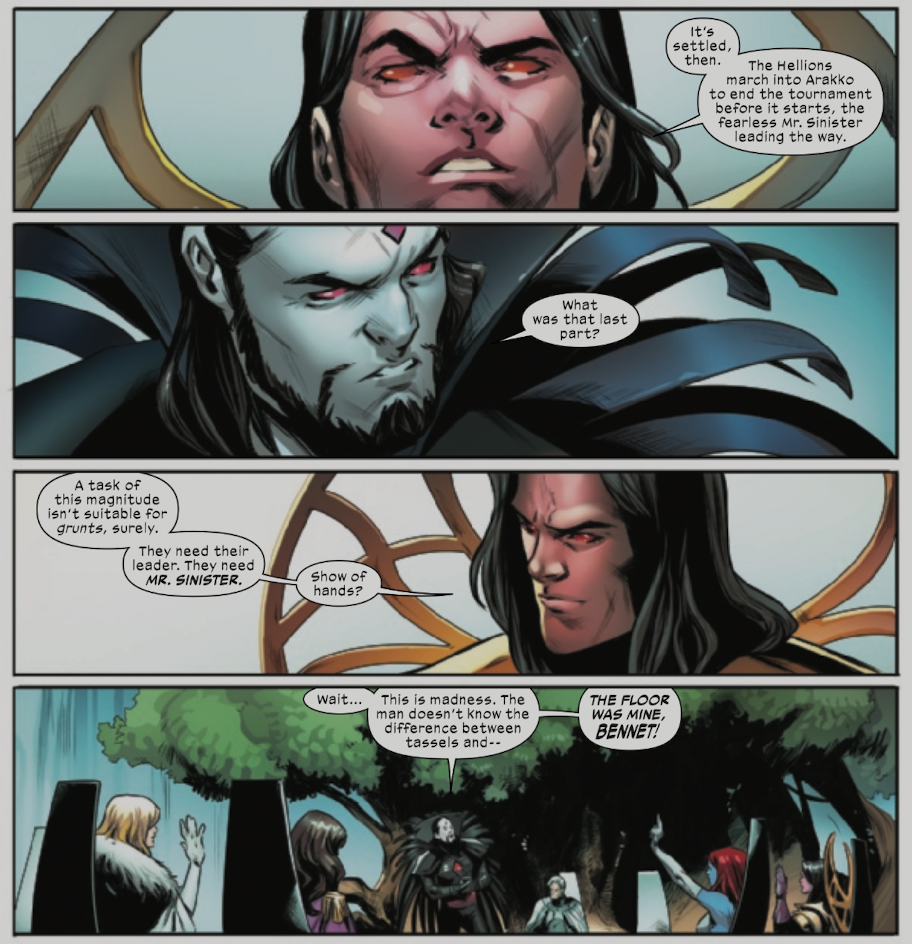Sworded Out
“Sworded Out”
X-Men #16
Written by Jonathan Hickman
Art by Phil Noto
• The end of this issue introduces a new structural conceit for the X-Men – Cyclops and Jean Grey will be the leaders, and the rest of the members will be voted in by the citizens of Krakoa. The concept is basically an inversion of a tradition from the Legion of Super Heroes – rather than the leaders be voted in, it’s the actual membership of the team. It looks like we won’t see how this plays out for a little while as the new team will be revealed at the Hellfire Gala, but it does seem like an idea that is going to backfire on Cyclops and Jean in some way. But in any case, it’s very pointedly different from the complete lack of democracy that went into the creation of the Quiet Council, and everyone involved is going into this new iteration of the X-Men with some understanding that the Council and the X-Men will come into conflict at some point.
• This issue also establishes the new status quo of Arakko, which is now on Earth as a result of Apocalypse’s bargain with Saturnyne at the end of X of Swords. Arakko – as a sentient body of land, and as a people – refuses to merge with Krakoa. Isca the Unbeaten is revealed to be one of the leaders of Arakko, and though she sits as part of a governing body, her power to never lose essentially makes her the de facto ruler of the nation as she always gets her way. She meets with Xavier and Magneto and peacefully but bluntly explains that the people of Arakko are hardened by centuries of war and will not be able to shake that off any time soon.
Phil Noto’s art on this very talky scene is carried in large part by his very thoughtful coloring in which Xavier and Magneto wear their black and white clothing on a cool green background while Isca is surrounded by red and brown foliage that matches the earth tones of her armor. Noto also does a good job of conveying how gentle and effete Xavier is, framing him as small and distant in the frame as he clutches a Krakoan flower. I think this choice may have had a lot to do with how much dialogue he has in those panels, but it’s very effective in contrast with the tight shots of Isca that make her appear strong, confident, and unflappable.
• The most important bit of news on the Arakko front is buried somewhat in the issue, as Cypher reminds the Quiet Council that there’s roughly twenty times as many Arakki mutants as there are Krakoan mutants. The immediate implication of this is that this would be quite bad for Krakoa should the two nations come into conflict, but the bigger problem is more obviously what is going to happen once the rest of the Earth finds out that a nation of several million battle-hardened mutants from a hell world now reside on the planet with them. I suspect that once this news gets to Orchis it will lead to the activation of Nimrod and the deployment of the machines being built in Sentinel City on Mercury, and this will go very, very badly for the mutants of Arakko. I suspect that one way or another only a massive tragedy on Arakko and the heroic intervention of the X-Men will unite the Krakoans and Arakki.
• I do hope we get to see some Arakki mutants venture out into Earth and decide they like it a lot better than the nightmare they were trapped in. Seems reasonable, right? Surely some nature will beat out nurture here.




















